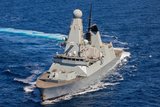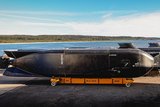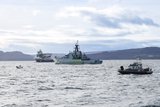Taiwan entrusts USVs with task of deterring a PLA amphibious invasion
This is the Kuai-Chi unmanned surface vessel developed by NCSIST. It is a prime candidate to be mass produced. (Photo: Taiwan MND)
Cognisant of Ukraine’s combat experience in the Black Sea during the ongoing war with Russia, Taiwan is feverishly working to develop and field new types of unmanned surface vessels (USV). It hopes that such unmanned systems, as part of a wider asymmetric-warfare approach, will help deter any People’s Liberation Army (PLA) invasion of Taiwan.
Tin Pak, at Taiwan’s National Defense University, commented in a report for the US-based Center for Maritime Strategy: “Taiwan has been closely monitoring developments in the Black Sea. Recognising the criticality of unmanned warfare in any future conflict, Taiwan has invested large sums in expanding its
Already have an account? Log in
Want to keep reading this article?
More from Naval Warfare
-
![Canadian Coast Guard’s OOSV delivery is “major milestone” in fleet modernisation]()
Canadian Coast Guard’s OOSV delivery is “major milestone” in fleet modernisation
The Polar Class 6 platform is the largest CCG science-dedicated vessel and will operate on the country’s east coast.
-
![How the Anduril-HHI autonomous ship plan fits in with the US Navy’s MASC programme]()
How the Anduril-HHI autonomous ship plan fits in with the US Navy’s MASC programme
The new modular vessel is expected to be developed for both commercial and defence use, with a heavy focus on production speed and mission flexibility.
-
![Indo Pacific 2025: Autonomous systems reigned but can the Australian Defence Force afford it?]()
Indo Pacific 2025: Autonomous systems reigned but can the Australian Defence Force afford it?
Multiple autonomous systems and technologies were on display at this year’s Indo Pacific, but questions remain over how the Australian Department of Defence will balance the books.
-
![How the UK Royal Navy is powering up its hybrid fleet to combat new threats]()
How the UK Royal Navy is powering up its hybrid fleet to combat new threats
Since it announced its move towards a new “hybrid navy” earlier this year, the force has announced a number of new uncrewed technologies in the works.























